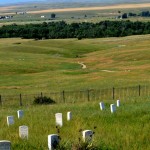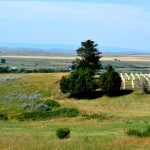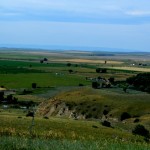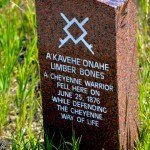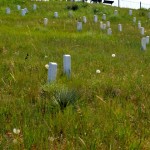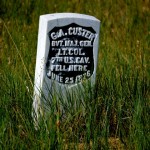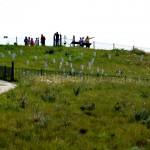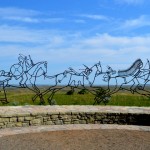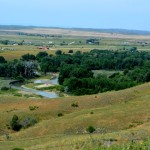The battle of the Little Big Horn aka Custer’s Last Stand. I knew very little about this event, basically that Custer and his soldiers had a battle with some native Americans and lost and every man was massacred.
Well, it’s more complex than that! Here’s what I know now about this event after spending a day at the Little Big Horn National Park:
The Sioux and Cheyenne tribes of Montana and Wyoming had been rounded up and put onto a very large reservation after some of their leaders signed a treaty. The bison that they depended on for food, clothing and many other aspects of their lives were decimated and there were NONE on the reservation (the decimation of the bison is another story, but in a nutshell there were an estimated 8MILLION bison in North America in 1840 and only 500 left by 1890. Native Americans didn’t do that, white man did!).
Sitting Bull, Crazy Horse and other native American leaders who had not signed the treaty left the reservation and many others left with them. In December of 1875 the government issued orders – they had 30 days to get back to the reservation or be considered hostiles, in which case they would be forced back or killed. In the middle of the worst winter they had ever seen, there was no way to get the women and children back to the reservation even if they wanted to go (do you think the government did that on purpose?!?) and by June the government sent the cavalry out to get them.
Custer headed one of three commands sent to the area and he had approx. 500 men. There was a command from the south with a little over 1000 men, and one from the west with under 500 men. The command from the south engaged the native Americans first, were driven back easily and they decided to go back to Wyoming and go fishing (this is a true fact!) Custer didn’t know that since there was no way to communicate among the three commands. The command from the west arrived one day too late and to them fell the task of burying the dead.
So Custer, thinking there were two other commands headed towards the native Americans like he was doing, came to the camp. They were astonished to find over 8,000 people, over 2,000 of them warriors in the camp.
Custer divided his command into three sections, and one struck first but was easily pushed back. Custer’s section came from the north, but the native Americans had already routed the first section and rode north to face Custer’s men. This was over 2,000 warriors vs. 263 men with Custer! Custer sent runners to the other two sections saying “Come quickly, bring ammo” but they couldn’t get through. Custer though the other commands would show up, they didn’t.
The battle was very one-sided. Towards the end Custer ordered his men to dismount and shoot their horses to use them as barricades, but it was too late and this action stunned the native Americans into really thinking the white man was crazy, and they killed all the men in Custer’s section. The other two sections were later surrounded and held under siege for over 24 hours until they gave up and were allowed to leave.
When the command from the west arrived, they and the survivors buried the dead soldiers where they lay. Several years later the dead were all dug up and re-buried in one mass grave with a monument on top. There were headstones placed where each man fell, which shows where the battle was fought. The native Americans took their dead away, but later (like in the 1990s) some headstones were placed where stories from survivors said that it was likely that native Americans had fallen.
The news of this battle reached Washington DC two weeks later, in the middle of the 4th of July festivities on the 100th anniversary of the signing of the Declaration of Independence. The news angered the government, who sent a much larger force west to subdue the native Americans. They were subdued and forced back to the reservation, where almost half died of starvation the next winter while food that was sent to sustain them was withheld from them.
Personally, I’m shocked and saddened at the way the white Europeans treated the native Americans, here and elsewhere during the American history.
Anyway, the national park is fairly small and contains only part of the site of the battle. There’s also a Veteran’s Cemetery on the park, not related to this battle. Veterans from the Spanish-American war, WWI and WWI, Korea and Vietnam are buried here.
The pictures below show the valley as seen from the site of the battlefield – you can imagine what it would have looked like with 8,000 people living in the valley, the grave markers (look closely, you can see several all over the hillside), and the grave marker of Custer (who was disinterred and taken back to Washington at a later date) and one of the Indian chiefs who died in the battle. Also, there’s a picture of a native American sculpture that was erected along with walls showing some history of the Sioux and Cheyenne people that were engaged in the battle.


